by Niki Crawson | Oct 9, 2015
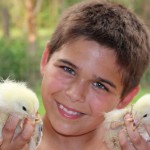
Noah, a Holmes County 4-H member, is learning responsibility through the 4-H Chick Chain project.
Regardless of the age-old debate, “which came first, the chicken or the egg?” one thing is certain- raising chickens is a big responsibility. One of the newest and most creative ways that some of our Florida 4-Hers are learning the importance of being responsible is through the 4-H Chick Chain pilot program.
This year, six counties in the Florida Panhandle partnered with Alabama 4-H to offer the Chick Chain program. The goal of this project is to help youth learn life and workforce skills while learning how to raise and show chickens. Thirty-six Florida 4-H members chose to take on the responsibility of raising 18, two-day old chicks from May through October. Over the course of the program, youth participated in workshops to learn how to care for their chicks, keep records of their project, and how to prepare their animals for a show. This past Saturday marked the culminating event of the project when youth participated in a show and auction in Ozark, AL. During this event, youth competed in a showmanship competition, record book competition, and poultry quiz. All three events counted towards their overall score.
Members also had a short course in entrepreneurship- they were required to meet with potential buyers and market their hens. Life skills were clearly present in every aspect of the 4-H Chick Chain program which aided youth in the further development of not only responsibility but also confidence, capability, and compassion. When asked about his experiment, Noah, a Holmes County 4-Her shared:
“Chick Chain is a great opportunity to learn about responsibility and respect for other people and animals. You get to raise 18 of your very own chickens for a couple months and then get to take them to a show with your fellow 4Her’s to compete for ribbons and money. You also learn about proper sportsmanship. I love it!”
Based on participant’s feedback, we will be expanding the pilot next year and making some exciting programmatic changes. Holmes County 4-H parent and club leader, Jewellyn Owens, was instrumental in developing the Chick Chain pilot for Florida because she saw the potential this program had to help youth learn valuable life skills while increasing their knowledge about agriculture. Jewellyn shares:
“My family Loves Chick Chain. It is a great program for children wanting to do a 4-H livestock program but their parents don’t feel they are ready yet or can’t afford the cost of the larger livestock. Chick Chain has taught my children respect, sportsmanship, caring for another living creature and responsibility. My children love seeing their chicks grow from 2 day chicks to full grown egg laying chickens. Best part is getting to eat their chicken’s eggs. I also feel it teaches them other aspects of life like record keeping, writing, leadership skills, financial responsibility all things that will help them years down the road.”
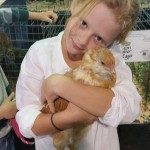
4-Hers spent 6 weeks learning how to care for their chicks, biosecurity, showmanship, and recordkeeping.
If you would like to help 4-H grow responsibility in your community (through this program or others) consider becoming a 4-H volunteer. For more information about becoming a volunteer, or to find out about next year’s 4-H Chick Chain program, contact your local UF IFAS County Extension Office. We are also looking for sponsors to help expand this program.
For more information, check out:
by Whitney Cherry | Oct 8, 2015
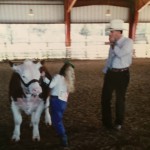 Growing up, we lived on a farm. At the age of 8, and not weighing much more than 50 pounds, my dad called me outside to a relatively small pen that he had fenced off the weekend before. He taught ag, so farming was more of a hobby for us, but this was something new. I noticed my grandpa’s old beat up blue horse trailer backed to the pen’s gate. I can remember my dad helping me climb onto the wheel well of the trailer and peek through the slats to see two yearling steers. One black and one red and white. “Which one do you want?” he asked. At the time I didn’t know that the judge always picks the black cow to win, in fact, I didn’t know there were any judges involved at all. I didn’t know why these cows were at our house about to go into a special pen. All I knew was that red cow was beautiful, and that’s the one I chose. My dad laughed and said, “He’s a haus.” So that became his name.
Growing up, we lived on a farm. At the age of 8, and not weighing much more than 50 pounds, my dad called me outside to a relatively small pen that he had fenced off the weekend before. He taught ag, so farming was more of a hobby for us, but this was something new. I noticed my grandpa’s old beat up blue horse trailer backed to the pen’s gate. I can remember my dad helping me climb onto the wheel well of the trailer and peek through the slats to see two yearling steers. One black and one red and white. “Which one do you want?” he asked. At the time I didn’t know that the judge always picks the black cow to win, in fact, I didn’t know there were any judges involved at all. I didn’t know why these cows were at our house about to go into a special pen. All I knew was that red cow was beautiful, and that’s the one I chose. My dad laughed and said, “He’s a haus.” So that became his name.
As it turns out, Haus was a show steer. With my dad’s help I spent a lot of cold, dark evenings after school walking that steer with fingers so numb I thought they’d break off if he jerked too hard. I learned to groom him. I learned to lead him. I learned how to feed him properly. And I learned that extra hoses and an automatic waterer were well worth the investment the next year when it cut down on the number of trips I had to make with cumbersome, sloshing, five gallon buckets of water to make sure the cows didn’t go thirsty.
I quickly fell in love with the whole idea of showing cattle, and by the Fed Cattle Show, Haus was well over 1,500 lbs. Incidentally, I hadn’t gained an ounce – in retrospect it might have had something to do with hauling those buckets of feed and water. However, I wasn’t scared. You see, as Haus grew, so did I. Not physically as I mentioned before, but my skill had grown, and so had my confidence.
For those of you who don’t know, showing cattle isn’t like other 4-H competitions where you are placed in age categories. The classes are based on animal weight in a steer show. So I walked in the ring to show with people more than twice my age. I didn’t know any better. As luck would have it, Haus not only placed first in his class, but he placed 2nd in the show as Reserve Grand Champion behind the steer everyone said was the clear favorite. What they couldn’t believe was that an eight year girl with less than a year of show experience and a white-faced red cow had beaten a sixteen year old veteran pro with a pure bread black Angus on her lead. Apparently it was a bit of a toss up between her steer and mine as to which would take the Reserve Champion spot. And as I was repeatedly told, when it’s close, the black cow always wins – no matter who’s on the lead.
From this experience I learned that it didn’t matter my age or size, I could do anything. The confidence I gained from this experience sparked a courage in me that pushed me to become a champion in poultry, livestock, and land judging, in public speaking, and in showing rabbits, chickens and hogs as well. I used each of those experiences to fuel countless other successes in life. And each time I was further building that courage. The same courage that gave me the strength of character to be honest, to show integrity when it’s not easy, and to care for others around me. It gave me the strength of character to make wise choices even when they were widely unpopular and to stand alone when it would have been easier to follow the crowd.
It certainly hasn’t always been easy. And I’ve failed a time or two. But, I continue to grow – much like the 4-H motto suggests, “To Make the Best Better”. I will be forever grateful to my mom and dad for choosing 4-H as the vehicle to start my lifelong journey toward an upstanding character. Through them and their support and guidance I came in contact with agents, volunteers, and friends from other clubs and counties who have helped me grow. Now it’s my turn and yours to inspire the next generation. How will you empower youth in your community to grow through 4-H? 4-H offers a wide range of opportunities for youth and adults- everything from animal science to aerospace. To volunteer or enroll a child in 4-H, contact your local UF IFAS County Extension Office or visit http://florida4h.org. It’s never too late to start growing character and make a positive difference!
by Whitney Cherry | Apr 17, 2015
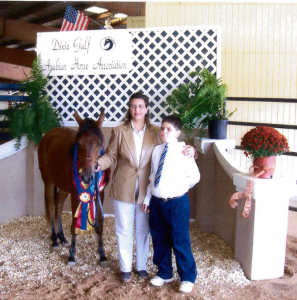
Dr. Williamson helping a 4-Her at a show
There are many reasons why 4-H has stood the test of time for more than 100 years. In addition to its link with land grant universities, 4-H is family friendly and available in every state and every county in the US (and even some foreign countries like Korea, Cuba, Germany and Italy). In fact, you can be a lifelong participant in 4-H- first as a youth member, then as a collegiate 4-H member, and later as an alumni or volunteer. Dr. Reese Williamson is a great example of how to turn a 4-H experience as a youth into a lifelong passion. She joined 4-H in 1974, in McKean County, Pennsylvania and was active in horse clubs, livestock clubs, downhill ski clubs, and even a square dancing club! As a teen, she fine-tuned her communication and leadership skills as a member of the 4-H County Council, which later led to a summer internship as the 4-H Assistant to the County agent. “My 4-H Extension Agent in Pennsylvania was a motivator and wrote recommendation letters for me for college and vet school,” says Dr. Williamson. “I have been involved in 4-H since 1974 with the exception of the five years while I was in vet school. As soon as I moved to Florida, I looked up my local county Extension Office to become a volunteer.”
When asked why she decided to extend her 4-H involvement as a volunteer, she says “I enjoy that there is a place for everyone [in 4-H]. I enjoy sharing the joy of learning and of livestock and horses with youth. It’s important that youth know where their agricultural products come from, that they respect animals and the impact they have on the environment. I want them to have a positive experience with horses and other animals.”
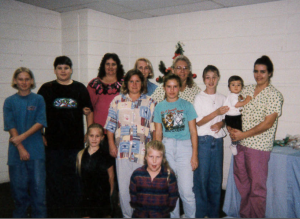
Dr. Williamson with members and alumni of her 4-H club
Without volunteers like Dr. Williamson, many youth would not have opportunities to learn about agriculture or develop life skills such as responsibility, confidence, and compassion. She shares, “It’s challenging to be a youth volunteer in today’s society. Most youth are from single-parent families. Children are living in two homes with multiple parents and grandparents often creates scheduling conflicts, but we must put the children first- they are the priority. It’s important to me to never disappoint or extinguish a child’s enthusiasm. If a child works towards a goal, it’s important that they are not prevented from completing that goal because of a scheduling boundary.”
Dr. Williamson’s passion for helping youth has had a tremendous impact on the Okaloosa 4-H Program over the past 25 years. Many of her members have become teen volunteers and later, as adult 4-H Alumni, come back to volunteer.
Kyle Godwin, an Okaloosa 4-H Alumni says, “Over the years of being in Dr. Williamson’s 4-H club, both as a member and then as the Club President , she laid many building blocks for me from public speaking to proper animal husbandry. She is always willing to go out of her way to help a new kid get started raising animals.” Another 4-H Alumni, Nathan Moores, shares: “Dr. Williamson has been a dedicated volunteer throughout my 4-H experience and we are blessed to have her. She has gone out of her way to help me and my fellow 4-Hers with our projects, whether it was husbandry questions, vaccinations, or health certificates.”
Do you have a passion or skills that you would like to pass on to the next generation of parents, employees, civic leaders, and decision makers? Dr. Williamson’s advice to anyone considering getting involved is: “Step up and volunteer! With 4-H, you can have a positive influence on our next generation of citizens. It is definitely worth squeezing the time into your schedule.” You don’t have to be a 4-H Alumni or a veterinarian to volunteer. 4-H needs caring adults from a wide variety of backgrounds, skills and experiences. For more information, contact your local UF IFAS Extension Office, or visit http://florida4h.org/volunteers.
Your opinion matters! Please take this short survey to help us improve our blog https://ufl.qualtrics.com/SE/?SID=SV_3gtLKjqia3F75QN
by Heather Kent | Apr 15, 2015
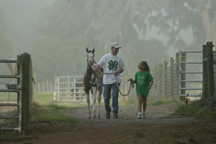
UF IFAS Photo
Last year, more than 4,000 youth participated in the Florida 4-H Horse Project. These youth would have never had the opportunity to learn horsemanship and leadership skills without horse project volunteers. Project leaders not only work with 4-H clubs, they often serve on committees to help plan and implement shows and other horse related events. In the Florida panhandle, twenty-three volunteers comprise the Area A 4-H Horse Advisory Committee. These volunteers plan and execute our district qualifying show (coming up this weekend in Marianna) as well as assist with the state horse show in Tampa. They also plan other horse project related events such as horse judging, showmanship clinics, nutrition seminars, 4-H Hippology and Horse Quiz Bowl.
“The Area A Horse Committee Volunteers are some of the most dedicated volunteers I have ever met,” shares Heather Kent, the regional 4-H agent. “Many of them have witnessed first-hand the potential of the 4-H horse program to help youth learn lifelong leadership and communication skills and they share a legacy of caring and compassion that influences every youth they work with.”
Terry Stout is one of those volunteers. Terry states, “I grew up in 4-H and FFA and when my daughters were old enough, they joined the Eglin Riding Stables 4-H Club to learn how to groom and care for their horses. 4-H was a large influence on them and now that they are alumni, they give back by teaching and helping the next generation of horse kids. I have learned a lot as a volunteer, and I am involved on many advisory boards because I know I can help most by being a voice for youth and other volunteers.”
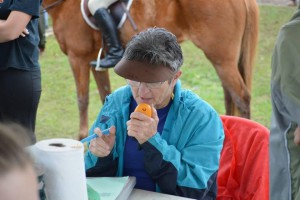
4-H volunteers plan and implement educational events at the club, county, district and even state levels. Escambia County 4-H Photo
Anne Peterson, a 4-H volunteer from Escambia County, says “I became involved with 4-H when my daughter was 10 years old. I have always wanted to protect our youth and see that they receive the best instruction possible for their horse project. In order to see this happen, I became involved in the local, area, and state horse program. Today I still see the need for volunteers to continue making the best better and as long as there is a need I want to help any way I can.” Anne was inducted to the Florida 4-H Hall of Fame in 2013 for her service as a volunteer.
Barry Hoffman, a Leon County volunteer, got involved in 1997 with the Trailblazers 4-H Club. Seeing a need for funds to help youth attend 4-H horse camp, Barry led a committee to organize a Horse Expo at the North Florida Fairgrounds to teach others about riding techniques, horse management, tack sales, and more. “Barry is always available to help with whatever is needed- which has even included helping me when by car broke down on the interstate on the way to a horse committee meeting. He continues to serve at the district level eleven years after his youngest son graduated from 4-H. Barry plays a major role in both the area and state horse shows, and is an incredibly valuable resource for us,” says Marcus Boston, the Leon County 4-H Agent.
Jean McMillian, a Gulf County volunteer, has been involved for more than 40 years. Roy Carter, the Gulf County Extension Director says, “Mrs. McMullian has led three generations of 4-H youth through the 4-H horse program. Her club, the Big River Riders 4-H Club, holds the county record for the longest running 4-H club and she is one of the strongest leaders we have ever had the pleasure to work with. She has been the backbone of our horse program and is always willing to help in any capacity.” Her son Russell is continuing the family tradition by being involved as the co-chair for the speed events for the area qualifying show.
Terry Harris has volunteered in both Jackson and Gadsden counties since the early 90’s, helping hundreds of youth with their horse projects. Angel Granger, the Jackson County 4-H Agent shares, “Even though his nephews are grown now, Terry continues to work tirelessly with 4-H and is a wonderful advocate for the program. We are very fortunate to have someone like him working at both the club level and serving as a member of the 4-H Area A Horse Advisory Committee.”
Lucy Notestine has been a volunteer for the last 8 years, and currently serves as the Area A Horse Advisory President. She, her daughter Shane Kenny and Dara Strickland raise over $2,000.00 each year to provide incentive awards for area horse show participants. Their 4-H Agent, Dr. Paula Davis says, “They realize that many youth are too young to advance to the state show therefore they work really hard to make the Area A Show a special event to encourage further participation and help the program grow.”
These stories have one very important thing in common- each of these volunteers has a heart for helping young people succeed. If you have a similar passion, consider becoming a 4-H volunteer. To find out how, contact your local Extension Office or visit http://florida4h.org/volunteers. If you are a parent or volunteer new to the 4-H Horse Project, Angel Granger,has developed a handy checklist to help you prepare for your next show. You can download the checklist and keep it in your show box or horse trailer so that you are always prepared to do your very best. If you laminate the list, you can use a dry-erase marker to check items off each time you pack your trailer.
Your opinion matters to us! Please complete this short survey so we can improve this blog https://ufl.qualtrics.com/SE/?SID=SV_3gtLKjqia3F75QN.
by amgranger | Apr 14, 2015
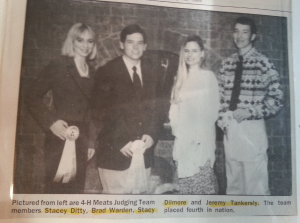
Brad and Stacey at the 1995 National 4-H Meats Judging Contest
Stacey (Ditty) Warden joined the Lovedale 4-H Club at the age of ten as a shy girl not knowing just how drastically 4-H would impact her life. She joined upon the recommendation of her aunt, who had just started working at the Extension Office as the new 4-H Secretary. One of Stacey’s first projects was poultry judging. A few years later, she met her future husband, Brad Warden, while attending the 4-H Ham and Hog workshop in Gainesville. Stacey and Brad showed cattle and participated on the 4-H Livestock, Poultry and Meats Judging teams at the county, state and national levels. They attribute their success to supportive parents as well as their former 4-H Agent, Shelia Andreason, who now works for Alabama 4-H. Shelia remembers their determination and dedication, “4-H was a safe place for kids to learn how to compete in a competitive world. Brad and Stacey easily mastered the vocabulary, points to evaluate, and steps to give a logical set of oral reasons and were able to transition from one judging topic to the next. I am very proud to see them coaching judging teams for Jackson County as alumni of the program 20 years later!”
Brad and Stacey also transitioned from childhood friends to teenage sweethearts. They married soon after high school graduation and have been married 18 years. They have two children, Hayden and Eden. Today, their son Hayden shows steers and participates in poultry, livestock, and meats judging. Eden is not yet old enough to join 4-H, but is a ‘future 4-Her in training.”
Last year, Brad and Stacey decided to start a 4-H club so that other youth (including their own) could benefit from 4-H the same way they did. “Kids need an outlet to learn about agriculture and livestock and we wanted to continue the strong tradition of livestock judging in Jackson County.” Their passion for 4-H is contagious. Their club is one of the fastest growing clubs in the county, with nearly 50 members. “It was a real eye opener to see how many youth and parents were attracted to learning about livestock. Many of them had never owned an animal or participated in a judging contest before joining 4-H. We were amazed at the response we got,” said Stacey.
One of the reasons that this club is so popular is because Brad and Stacey are passionate advocates for 4-H. They are quick to share why learning about agriculture is still relevant today, despite a decrease in the number of “farm kids.” Stacey shares, “Jackson County is an agricultural county. Kids need to know about agriculture in order to grow up to be informed consumers, stewards, and citizens. Poultry judging is a great way for kids to get started in agriculture. It teaches them about quality control, communication, and reasoning skills. The skills they learn are very practical and relate to everyday life. 4-H is a true testament to what the programs teach the youth. Once parents see what the kids are learning, they want their kids involved.”
“I tell parents all the time that I would not be the person I am today if I had not joined 4-H. I was a poor farm girl that had never been outside of Jackson County. 4-H helped me learn how to speak in front of others, build confidence, and gave me so many opportunities I would not have had otherwise. This is what is missing in other programs, which tend to just focus on fun activities. In 4-H, activities are fun, but they also help youth develop valuable life skills that will carry them through school and their future career. 4-H focuses on the big picture of positive youth development, and kids are hungry for that kind of learning because they can’t get it anywhere else.”
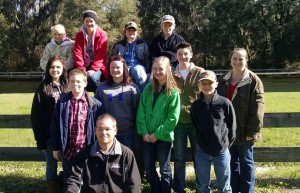
Brad and Stacey with members of their livestock judging team in 2015.
Brad and Stacey attribute the success of their club not only because of the content they teach, but also to a dedicated group of 4-H parents who are willing to pitch in and help out whenever needed. 4-H parents Stephen and Casey Roach shared, “We are so thankful that we have the opportunity to be a part of a 4-H club where the leaders get more excited about the kids’ accomplishments than the kids do! Brad and Stacey cheer on all the 4-H members and encourage them to do their best. They’ve done such a tremendous job that the kids are placing in competitions, gaining confidence, and learning valuable information about livestock. We couldn’t be happier or more appreciative of all that Brad and Stacey do for the Jackson County 4-H Livestock Club.”
There are no guarantees that you will meet your future spouse in 4-H, but you will reap benefits by sharing your passion and expertise as a 4-H volunteer! 4-H alumni like Brad and Stacey make ideal volunteers. Stacey advises “Jump right in- don’t hesitate! We were not sure about it at first, but with support from our 4-H Agent, other parents and the community, things have fallen into place. It is not nearly as intimidating as we thought it would be.” To find out how you can leverage your skills and experience as a 4-H volunteer, contact your local Extension Office or visit http://florida4h.org/volunteers.
Your opinion matters to us! Please take this short survey to help us improve our blog https://ufl.qualtrics.com/SE/?SID=SV_3gtLKjqia3F75QN.
by pmdavis | Mar 27, 2015
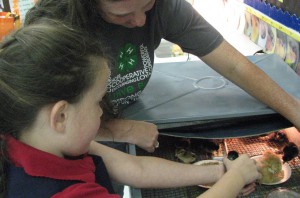 It’s almost Easter when lots of people think about those cute little chicks. Before you take on one of those cute little animals– let’s talk about the responsibilities and considerations when raising chickens
It’s almost Easter when lots of people think about those cute little chicks. Before you take on one of those cute little animals– let’s talk about the responsibilities and considerations when raising chickens
Keeping chickens isn’t much different than keeping pets – they need to be fed and watered every day and, yes, you have to deal with poop. However, most local veterinarians won’t check chickens, so you’ll also need to monitor your birds to know if a health intervention is needed. Handling and socializing your chickens from an early age makes it easier to get them to cooperate, but it also makes it more fun for you to enjoy their antics and unique personalities. If you’re thinking about getting chickens, the first thing to ask yourself is “why?” For human food production, self-sufficiency, selling eggs, entertainment, education for kids or simply as pets? Owning chickens can be all of these 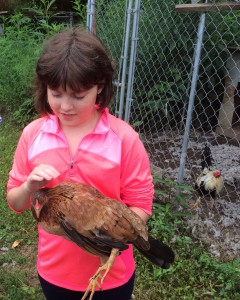 things. Your “why” will help you determine how much you want to invest, as well as guide you to what kind of chickens and coop you will need.
things. Your “why” will help you determine how much you want to invest, as well as guide you to what kind of chickens and coop you will need.
Everything from a few backyard chickens to 4-H projects and farms with several hundred chickens can be considered “small”. Just because a flock is small, does not mean that stewardship, efficient production, safe handling, and other rules can be ignored. Keeping a small flock of chickens for home use, a practice commonplace during our grandparents’ time, is becoming popular again. If you are considering this, you will need to educate yourself about poultry feeding, health and egg production, as well as food safety. There are many University publications on the web.
The University of Florida’s Institute of Food and Agricultural Sciences Extension has several articles on keeping chickens. UF/IFAS Extension has a section devoted to backyard poultry , Basic Guide for the Backyard Chicken Flock, which includes information about brooding, housing, feeding and nesting needs of birds. Other sites include: Escambia County Backyard Poultry Guide and Urban Farming Chickens 101. Other universities with excellent Extension resources to help with backyard poultry include: Mississippi State; Penn State; Purdue Extension; Colorado State Extension; a University of Minnesota and The University of Illinois Extension lists 33 resources on poultry. Another useful site is Illini PoultryNet.
Taking care of the chicks provides a fun way for kids to develop a sense of responsibility, while teaching them work ethics and healthy eating habits. Other ways your children could participate in 4-H and learn about poultry include: The 4-H & Farm Bureau Ag-in-the Classroom Embryology School Enrichment program offered in many counties. There are other activities that youth can engage in including poultry production, judging of poultry and poultry products, preparing foods using poultry and public presentations to inform others about chickens and poultry. Youth can compete in activities at the county, district, state and national levels. 4-H is one of the nation’s most diverse organizations and includes people from all economic, racial, social, political, and geographic categories. There are no barriers to participation by any young person. Participants are given the opportunity to engage in activities that hold their personal interest, while being guided by adult volunteers. The local 4-H Agent is a youth development professional who provides direction and program leadership as part of the nationwide Cooperative Extension System. For more information, contact your local UF/IFAS Extension Office or check out our web-site.











